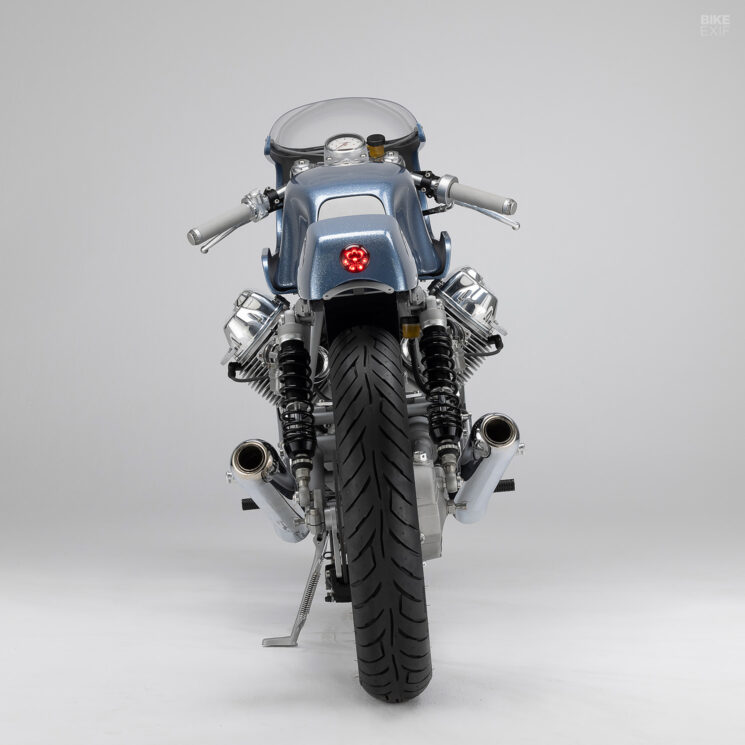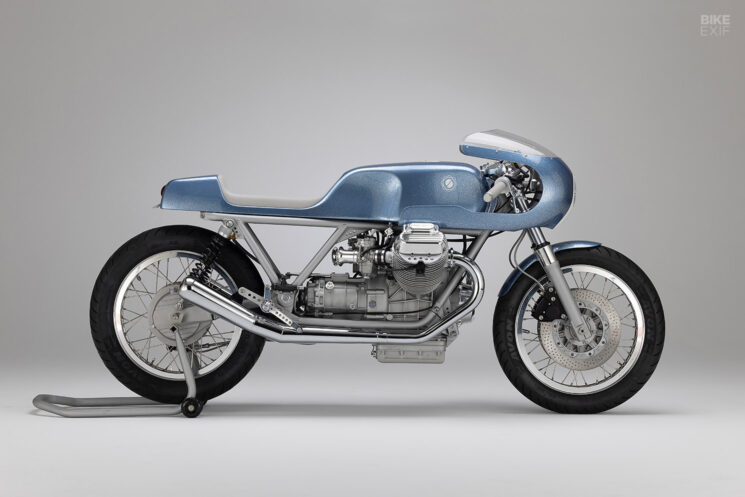
Our good friend and accomplished motorcycle designer, Ola Stenegärd, has a favorite saying; “It’s very simple to keep it complicated, but very complicated to keep it simple.” Kaffeemaschine subscribes to the same philosophy. Their Moto Guzzi café racer builds are impossibly minimalist—but it takes a wealth of experience and countless man-hours to make them that way.
Kaffeemaschine’s latest Moto Guzzi design is their most elegant yet. Dubbed ‘Aerodinamica’ and available as a limited series of 10 units, it’s a classic café racer blueprint that borrows cues from their previous work—but ups the ante in terms of refinement.
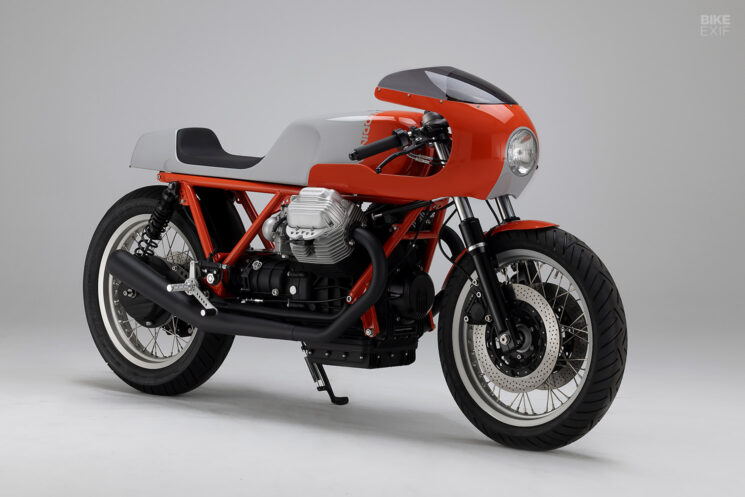
These two Moto Guzzi café racers, dubbed ‘Uno’ and ‘Due,’ are the first two builds in the Aerodinamica series. Uno [red and silver] is based on a Moto Guzzi Le Mans III, while Due [blue] uses an 850 T3 as its base. But with extensive changes to their V-twin engines and Tonti frames, the two base bikes are virtually indistinguishable.
Kaffeemaschine starts by rebuilding each bike’s motor with an exhaustive list of mods. The work includes a 1,000 cc capacity bump with new pistons, a proprietary camshaft, an electronic ignition, and Dell’Orto carbs. The crank is dynamically balanced, the flywheel is lightened, and the heads are treated to a twin-spark modification and bigger valves, with a ton of time spent on porting the intake channels.
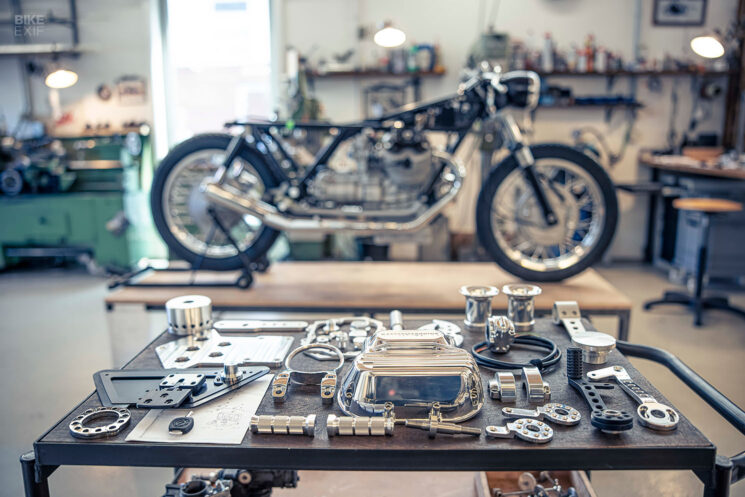
The reward for all that work is a power output of 83 hp, with 85 Nm of torque available from 3,000 rpm. Combined with an overall dry weight of 178 kilos [392 lbs], it makes for a peppy ride to complement the bike’s chic appearance.
The frame is heavily modified too, with the team spending up to two weeks cutting, grinding, and welding each unit. The 40 mm forks are a proprietary set that Kaffeemaschine has engineered, combining classic looks with a modern damping system. The yokes are their design too, and feature adjustable steering stops.
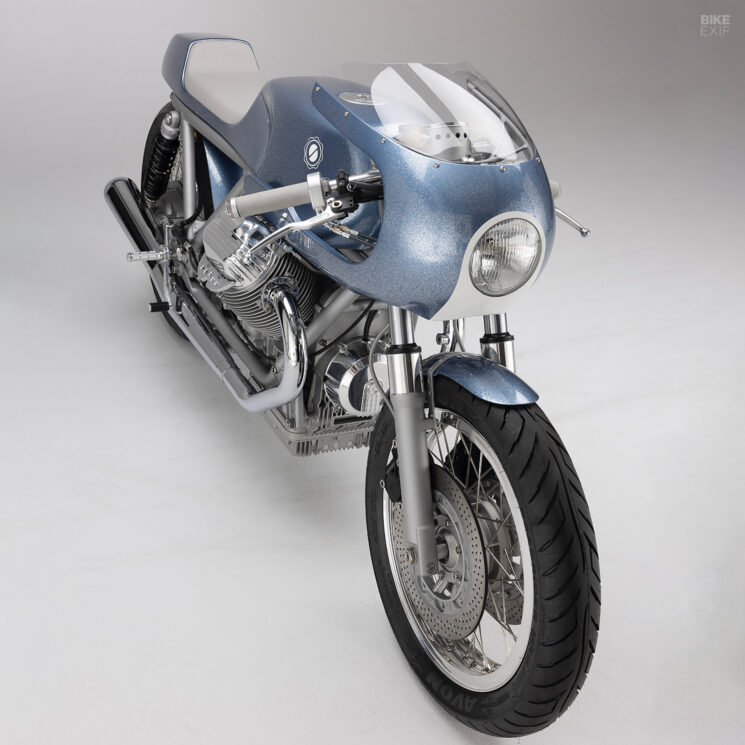
The 18” wheels consist of modified cast hubs and flanges, stainless steel spokes, and stylish Morad rims. The brakes use Brembo components, with twin front discs and braided stainless steel lines. Aerodinamica buyers have a choice of new Wilbers or YSS shocks for the rear.
Keen eyes will notice discreet Kaffeemaschine branding on the cylinder heads and front engine cover. That’s because these parts are entirely bespoke, milled from solid chunks of aluminum. From the burly battery plate to the clip-ons, throttle, foot controls, rear brake support, exhaust flanges, velocity stacks, and a slew of smaller bits, there’s nary an inch of each Aerodinamica that hasn’t been improved in some way.
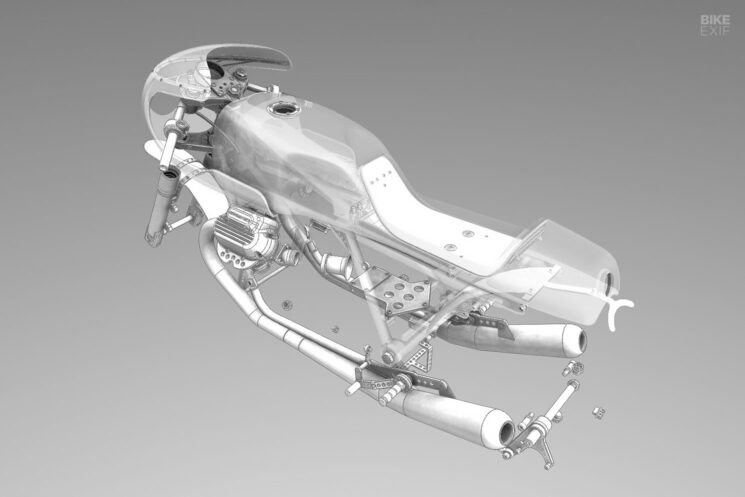
The story behind Kaffeemaschine’s new bodywork alone could fill volumes. The shop used to shape their Moto Guzzi café racer parts from handmade molds—but they’ve gone high tech on this run.
First, they 3D-scanned the 70s-inspired café racer parts that they’d already designed. Using those as a springboard, they refined and reworked their designs digitally, then used a five-axis milling machine to create negative molds. The final parts were then produced out of autoclaved carbon fiber.
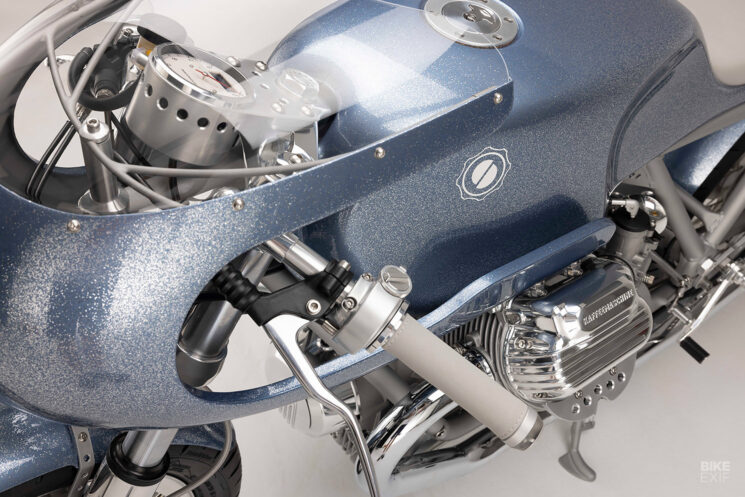
Kaffeemaschine’s previous café racers used a separate fuel tank and tail section, but for this series, the shop went for a one-piece arrangement. An ultra-slim fairing sits up front, capped off with a custom windshield that MRA made using Kaffeemaschine’s molds. There’s a clever glove box hidden under the seat too.
“The whole carbon fiber body is an impressive, light, and unbelievably rigid unit,” says the shop’s founder, Axel Budde. “Mounting it, it feels more automotive than motorcycle.”

Stainless steel brackets support the fairing, while a Motogadget-based electrical system ensures uber-clean wiring. Each bike also gets a stainless steel exhaust system and a full set of stainless steel fasteners, and every last part is cleaned up and refinished for a better-than-factory aesthetic.
Aerodinamica Uno’s red and silver livery is complemented by a host of tastefully blacked-out parts, while Due wears a blue metal flake paint job with 16 layers of clear.
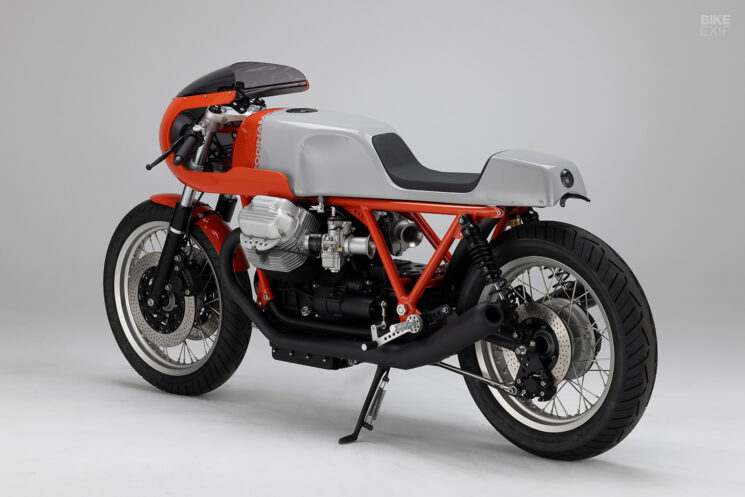
If that sounds a little over the top, wait until you hear how much time Kaffeemaschine spends on each build; 1,500 hours. It proves just how hard it truly is to create something this minimalistic and clean.
“I never wanted bikes that scream for attention,” says Axel, “but motorcycles that are reduced to the max, ride fast and well, and have a cohesive aesthetic.”
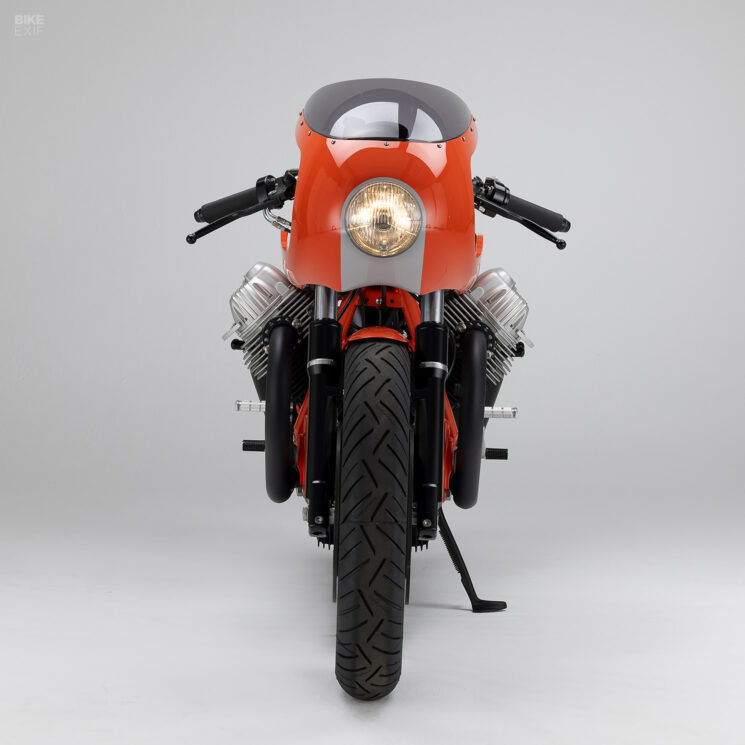
All that time spent sure is worth it—this is what it looks like when a custom shop at the top of its game decides to level up. Uno and Due are now for sale, and each one comes with a manual, tool kit, bike cover, and stand.
Which would you take home?
Kaffeemaschine | Facebook | Instagram
